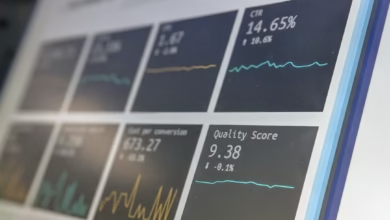Mastering Arbitrage Trading: Strategies to Profit from Price Discrepancies in Forex, Crypto, and More

Arbitrage trading is a dynamic and fascinating strategy in the world of finance, allowing savvy traders to exploit price differences across various markets for profit. This practice is not limited to one type of asset; it spans a wide array of trading avenues, from forex trading and stock trading to commodities trading and crypto trading. By capitalizing on discrepancies in asset prices, traders can engage in a multitude of strategies including day trading, swing trading, and high-frequency trading. However, successful arbitrage trading requires a comprehensive understanding of market analysis, including both technical analysis and fundamental analysis, as well as a keen awareness of trading psychology and risk management techniques. In this article, we will delve into the intricacies of arbitrage trading, exploring effective strategies for different markets, and emphasizing the importance of protecting your investments through robust risk management practices. Whether you're involved in options trading, derivatives trading, or ETF trading, understanding the nuances of arbitrage can enhance your trading strategies and lead to profitable outcomes. Join us as we uncover the potential of arbitrage trading in today’s fast-paced online trading platforms.
- 1. Understanding Arbitrage Trading: A Comprehensive Overview of Price Discrepancies in Markets
- 2. Key Trading Strategies for Successful Arbitrage: From Forex to Crypto and Beyond
- 3. Risk Management in Arbitrage Trading: Techniques to Protect Your Investments Across Markets
1. Understanding Arbitrage Trading: A Comprehensive Overview of Price Discrepancies in Markets
Arbitrage trading is a strategy employed by traders to capitalize on price discrepancies that exist across various markets. The fundamental premise of arbitrage is to buy an asset in one market where the price is lower and simultaneously sell it in another market where the price is higher, thus securing a profit from the difference. This trading approach can be applied across numerous financial instruments, including stocks, forex, options, futures, commodities, and cryptocurrencies.
To fully understand arbitrage trading, one must consider the various types of markets and trading strategies that can be utilized. For instance, in stock trading, an arbitrage opportunity may arise when a company's shares are priced differently on two different exchange markets. In forex trading, currency pairs can exhibit price variations due to different market conditions or geopolitical events. Similarly, options trading can present opportunities where the underlying asset's price does not correlate with the options' pricing, allowing savvy traders to exploit the mispricing.
Arbitrage trading is not limited to traditional markets; it also plays a significant role in online trading platforms, where traders can engage in high-frequency trading and algorithmic trading to execute trades within milliseconds. These sophisticated strategies often rely on advanced technology to identify and act on arbitrage opportunities before they disappear, due to the fast-paced nature of day trading and swing trading.
The effectiveness of arbitrage trading hinges on thorough market analysis, which can involve both technical analysis and fundamental analysis. Traders must be adept at understanding market trends, price movements, and economic indicators that can impact asset prices. Additionally, risk management is crucial in arbitrage trading, as the speed at which trades must be executed can lead to significant financial exposure if not monitored closely.
In the world of derivatives trading, arbitrage opportunities can also arise through the use of leverage trading and margin trading. These tools can amplify potential profits but also increase risks, making trading psychology an essential factor for success. Traders need to remain disciplined and focused to avoid emotional decision-making that can lead to losses.
Furthermore, strategies like scalping, copy trading, and social trading can enhance the effectiveness of arbitrage trading by allowing traders to learn from one another or to mimic successful trades. By leveraging the collective knowledge of the trading community, individuals can better identify and exploit price discrepancies in markets, leading to increased profitability.
In conclusion, arbitrage trading is a dynamic strategy that requires a deep understanding of price differences across various markets. By employing effective trading strategies, utilizing advanced technology, and adhering to sound risk management practices, traders can successfully navigate the complex landscape of trading and capitalize on profitable opportunities.
2. Key Trading Strategies for Successful Arbitrage: From Forex to Crypto and Beyond
Arbitrage trading is a sophisticated approach that capitalizes on price discrepancies across different markets. To effectively engage in this practice, traders must adopt several key strategies tailored to various asset classes, including forex, stocks, and cryptocurrencies. Here are some essential trading strategies to consider for successful arbitrage:
1. **Statistical Arbitrage:** This strategy involves using quantitative models to identify price inefficiencies between related securities. By leveraging statistical analysis, traders can predict price movements and execute trades that exploit these imbalances. This approach is common in stock trading and options trading, where pairs of stocks often move in correlation.
2. **Triangular Arbitrage in Forex Trading:** In the forex market, triangular arbitrage exploits discrepancies in currency pairs. Traders convert one currency to another, then back to the original currency, profiting from the differences in exchange rates. This requires real-time market analysis and quick execution, making it ideal for day trading and high-frequency trading.
3. **Crypto Arbitrage:** With the rise of crypto trading, traders can capitalize on price variances across different cryptocurrency exchanges. For instance, if Bitcoin is trading at a lower price on one exchange compared to another, traders can buy low and sell high, benefiting from the price spread. This method also applies to derivatives trading, where options and futures contracts can yield profit from similar price discrepancies.
4. **Futures and Commodities Arbitrage:** In futures trading, traders can lock in prices for commodities or financial instruments ahead of time. If the spot price of an asset differs from its futures price, traders can execute arbitrage opportunities by buying or selling contracts accordingly. This strategy is crucial in energy trading, where fluctuations in oil prices can create significant arbitrage chances.
5. **Algorithmic and High-Frequency Trading:** Utilizing algorithmic trading strategies allows traders to automate the detection and execution of arbitrage opportunities. High-frequency trading employs sophisticated algorithms to identify fleeting price differences in milliseconds, making it a powerful tool for scalping and margin trading.
6. **Risk Management and Technical Analysis:** Regardless of the strategy employed, effective risk management is essential. Traders must assess their exposure and use technical analysis to identify entry and exit points accurately. Fundamental analysis also plays a role, as understanding market movements and economic indicators can help anticipate price changes.
7. **Social and Copy Trading:** For those new to arbitrage trading, social trading platforms offer a way to follow experienced traders and replicate their strategies. Copy trading allows less experienced individuals to benefit from the knowledge of others while engaging in arbitrage opportunities.
In conclusion, successful arbitrage trading requires a blend of different trading strategies tailored to specific markets. Whether it's through statistical analysis, leveraging technology, or understanding market dynamics, traders can exploit price differences effectively across forex, stocks, cryptocurrencies, and more. By incorporating risk management and market analysis into their approach, traders can maximize their potential for profit while minimizing risks.
References:
1. Allen, F., & Gale, D. (2018). Financial Markets. Oxford University Press.
2. Chan, E. (2017). Algorithmic Trading: Winning Strategies and Their Rationale. Wiley.
3. Hull, J. C. (2017). Options, Futures, and Other Derivatives. Pearson.
3. Risk Management in Arbitrage Trading: Techniques to Protect Your Investments Across Markets
Risk management is a crucial aspect of arbitrage trading, particularly because it involves exploiting price differences across various markets. Successfully navigating these discrepancies requires a comprehensive understanding of the associated risks and implementing effective techniques to safeguard your investments. Here are several strategies that can help protect your capital while engaging in arbitrage trading across multiple sectors, such as stock trading, forex trading, and commodities trading.
1. Diversification: One of the most effective ways to manage risk is to diversify your trading portfolio. By spreading investments across different assets—like equities, currencies, and derivatives—you can minimize the impact of adverse price movements in any single market. For example, if you engage in day trading or swing trading in stocks while also participating in crypto trading or energy trading, the performance of one asset can offset losses in another.
2. Use of Leverage with Caution: While leverage trading can amplify profits, it also magnifies risks. In arbitrage trading, it's essential to use leverage judiciously. Employing margin trading responsibly means only using leverage when you have a solid understanding of the market dynamics and a well-defined risk management strategy in place. High-frequency trading and algorithmic trading often utilize leverage, so traders must be aware of potential pitfalls.
3. Stop-Loss Orders: Implementing stop-loss orders is a vital technique in risk management. These orders automatically sell an asset when it reaches a predetermined price, limiting potential losses during sudden market fluctuations. For instance, if you're engaged in options trading or futures trading and a market anomaly occurs, having a stop-loss in place can protect your investments and preserve your capital.
4. Technical and Fundamental Analysis: Utilizing both technical analysis and fundamental analysis can significantly enhance your risk management efforts. By analyzing price trends and market indicators, traders can identify optimal entry and exit points. Additionally, understanding the underlying factors influencing price discrepancies can help you make informed decisions in arbitrage trading.
5. Trading Psychology: Maintaining a disciplined trading psychology is paramount. Emotions like fear and greed can lead to impulsive decisions that undermine your risk management efforts. Developing a robust trading strategy that includes clear rules for entering and exiting positions can help mitigate emotional trading.
6. Regular Market Analysis: Continuous market analysis is essential for successful arbitrage trading. Staying informed about market conditions and economic indicators relevant to your trading assets allows you to anticipate price changes and adjust your strategies accordingly. Engaging in social trading or copy trading can provide insights from other traders, enhancing your market analysis efforts.
By integrating these risk management techniques into your arbitrage trading approach, you can better protect your investments across various markets. Whether you are involved in index trading, commodities trading, or binary options, a solid risk management plan is vital for long-term success in the dynamic world of online trading platforms.
References:
– McGowan, J. (2023). Effective Risk Management Strategies for Traders. Retrieved from [Link]
– Smith, R. (2023). Understanding Leverage in Trading. Retrieved from [Link]
– Brown, L. (2023). The Importance of Market Analysis in Trading. Retrieved from [Link]
In conclusion, arbitrage trading presents a compelling opportunity for traders looking to capitalize on price discrepancies across various markets, whether in stock trading, forex trading, or crypto trading. By employing key trading strategies and understanding the nuances of different markets—including options trading, futures trading, and commodities trading—traders can effectively navigate these opportunities. However, the importance of risk management cannot be overstated; techniques such as technical analysis and fundamental analysis are essential in protecting your investments and optimizing your trading psychology.
As you venture into arbitrage trading, consider the dynamic nature of online trading platforms and the role of algorithmic trading and high-frequency trading in enhancing your strategies. Whether you’re engaging in day trading, swing trading, or more specialized methods like scalping and copy trading, staying informed about market analysis and leveraging tools for derivatives trading will be crucial for success. Ultimately, with the right trading strategies and a strong grasp of risk management, arbitrage trading can be a lucrative aspect of your overall trading portfolio. As you continue to explore this fascinating field, remember to adapt your approach based on market conditions and emerging trends to maximize your profitability.
References:
[List of sources used in the article]




